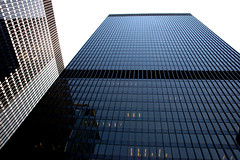
Rolf Achilles is a man who knows not only what the city of Chicago has been, could have been, and is -- but also what the city ought to be. All of that spilled over on our walk down Dearborn yesterday with around a dozen good folk who signed on through docomomo.
The walk originated at Mies’s Federal Plaza at the Adams intersection and terminated at Goldberg’s Marina Towers on the Chicago River. It was organized to raise awareness of Modernist buildings under threat – not yet old enough to earn landmark status, important enough that they should before someone decides to do something other than preserve them.
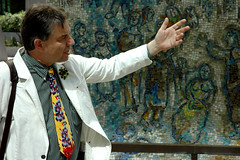
Achilles -- who is, among other things, an Adjunct Profession of the Art Institute, preservation adviser for Frank Lloyd Wright’s Unity Temple, and curator of the Smith Museum of Stained Glass Windows –- has one of those minds that skeins up anecdotes and insights, so each stop was loaded with story. Some of the tidbits that he served up included:
What did the glass manufacturer say when Mies asked for smoky glass panes? We’ve been trying to perfect clear glass for 2,000 years, and now you want us to muck it up? (This conversation spelled the beginning of the end for clear glass panes in the American skyscraper.)
The guy who designed the unremarkable skyscraper that faces Daley Plaza, opposite the Picasso? He did the math for Christo when he went through his wrapping stage.
Why did the name “New Bauhaus” not take in Chicago? Because Mies owned the copyright, and sued the guy who was trying to apply it here.
Where did the office cubicle debut in America? In the jewel box Inland Steel building. The cubicle was modeled after a German predecessor.
Total shrinkage when the terracotta facade was first installed on the Marquette Building? 1/8 of an inch. Total shrinkage when they went back and replaced some panels during restoration years later? 1 ½ inches. (Drove them crazy. Nobody knew how to do it right anymore.)
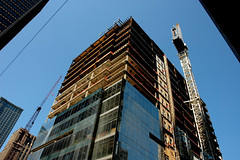
One of the more enjoyable stories of the walk was summoned out of the long dormant Block 37 in the heart of the Theatre District, which is just now starting to stir again with the construction of the new CBS building -- after the landmark buildings that occupied it were leveled and it lay as an empty lot for years and years. Come to find out this old strip of Dearborn, where the Goodman Theatre now sits, once housed more movie houses than Broadway, and was also the home to United Artists.
According to Achilles, David Wallerstein owned the movie distribution house UA, and while there made one of the lasting contributions to American cinema: selling exorbitantly priced popcorn and soft drinks to movie goers, effectively upping the average expense of going to the movies.
The businessman made two other essential, although questionably laudable, contributions to the American landscape: he backed both Ray Kroc and Walt Disney as they were just getting started, and he sat on the McDonald’s board where, according to the New York Times, he introduced the “supersize” product concept – a kissing cousin to the popcorn up-sell, which only just recently met its demise as the result of, interestingly enough, the pressure applied by a movie.
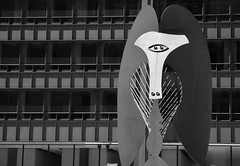
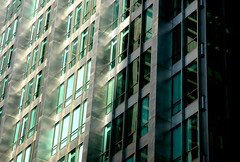






3 comments:
This is such a treat. This last bit reminds me of a great Mark Knopfler song about Ray Kroc, called "Boom, Like That". I promise you'll like it. Thanks for the tour, friend!
He must be very clever if he's an "adjunct profession" all by himself.
dude. exactly my point.
Post a Comment